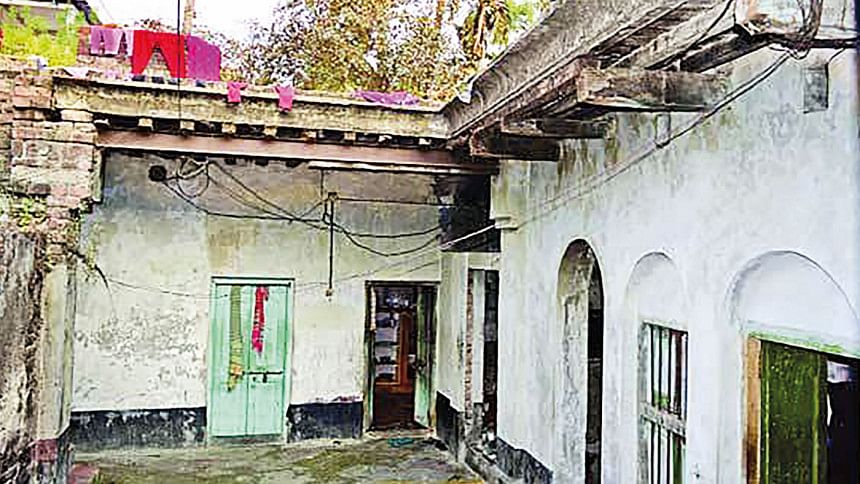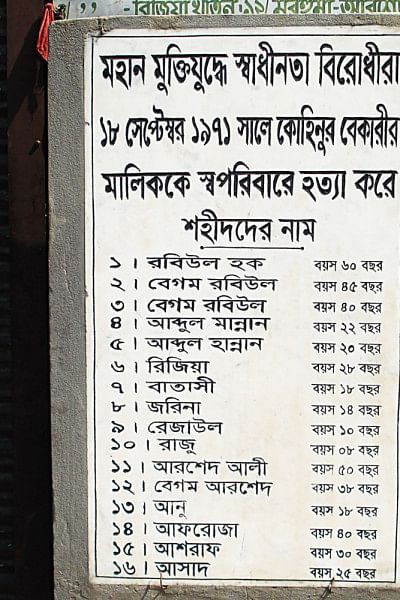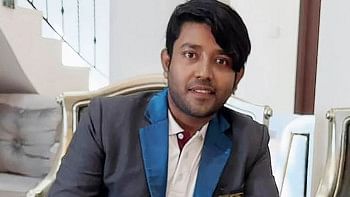Kohinoor Villa Massacre: Blood-soaked house of horror of 1971


The sheer brutality of the massacre shocks the people of Kushtia even today.
The bloodshed, which was carried out by local collaborators of Pakistan occupation forces, left 16 people -- including 11 of a family -- dead in September 1971.
It was so horrific that a Pakistan army officer was stunned to see the signs of ruthlessness the day after, said locals.
The Kohinoor Villa, where the carnage took place, is known as "Ekattorer Roktakto Bari" and though standing, the site of the killings and the mass graves remain unpreserved.
Studying its history and talking to locals, the villa can be traced back to two siblings -- Rabiul Haque Mallick and Arshed Haque Mallick -- who came to Kushtia from their ancestral land at Panchpirtala of West Bengal's Hooghly after the 1947 partition.
They had two more brothers but they and other family members remained in India.
Rabiul and Arshed bought the house at Deshwali Para and named it "Kohinoor Villa" after their mother.
In 1950, they set up the Kohinoor Milko Bread and Bakery Factory and engaged in various socio-political activities in the locality.
This correspondent recently spoke to Rabiul's nephew Halim Haque Mallick Alim, who now lives in Kohinoor Villa.
During the war, his father Ismail Haque Mallick was in Hugli with his wife, two sons and a daughter. They came to Kushtia after the war ended.
Halim, now 58, got a firsthand account from Akul, an employee of Kohinoor Milko Bread and Bakery Factory -- the lone survivor of the massacre -- and from locals in the years after.
After the Liberation War began, one of the first resistance wars against the Pakistan army in the country took place in Kushtia on March 30, 1971 and the district was freed by the next morning.
The day after the Mujibnagar government took oath on April 17, the Pakistan army recaptured Kushtia, imposing a complete curfew in the town.
"Many people of Kushtia then left for India. But my two uncles did not flee. Rather, they kept supplying bread, biscuits and other food to the pro-liberation EPR [East Pakistan Rifles] members and freedom fighters," said Halim.
"Local Bangalee Razakars and Biharis learned this and became furious at my uncles," he added.
On April 30, Korban Bihari killed pro-liberation businessman Suruj Mia in front of Rabiul's bakery, in Station Road area. Rabiul was an eyewitness to the killing, Halim said.
"Korban, who was a neighbour, threatened to kill my uncle."
Intimidated, Rabiul and Arshed along with their families left the area and took shelter in a residence of an acquaintance in Kamalapur village, around four kilometres from the town.
One day around five months later, Korban went to meet Rabiul in the village and requested him to return home.
"Korban told my uncle not to be worried, saying he would protect my uncle from any possible attack by the Pakistan army or razakars," said Halim.
"My uncles trusted Korban and returned home on September 18."
At around midnight, a group of around 25 Biharis and razakars came to Kohinoor Villa and knocked on the door. Of the 17 people present in the house, no one dared open it.
Korban loudly identified himself from outside and requested them to open the door multiple times.
At one point, Arshed's son Ashraf opened the door.
The killers stormed in and massacred 16 people in total, including the Mallick family members, guests, and bakery staff.
"Some were slaughtered and others were hacked to death. The killers kept music playing loudly on a cassette player so that the neighbours could not hear the sound of the victims' screams," said Halim.
The next morning, neighbours found bodies lying haphazardly in the bathroom, kitchen, and corridors of the residence.
Some bodies were also dumped in the drains, locals said.
They added that bodies of the female victims were found undressed and the killers also looted valuables from the house.
Hearing news of the killings, a Pakistani army officer rushed to Kohinoor Villa the next day. Even he was shocked to see the brutality, Halim said, quoting locals.
The bodies were then buried in four graves at the eastern side of the house, following the army officer's instructions.
The victims include Rabiul, his two wives and two sons -- Abdul Hannan and Abdul Mannan (who had joined a freedom fighter's group); Arshed, his wife, two daughters -- Anu and Afroza -- and his two sons -- Ashraf and Raju; two guests -- Rizia Begum and Rezaul; and the bakery staff Asad, Batasi, and Zarina.
Only bakery staff Akul survived the massacre, hiding himself in a corner of the house. Following the incident, he experienced mental health problems for around a year.
When Akul recovered from his trauma or was at least able to recall those horrific memories, a not yet 10-year-old Halim heard for the first time the story of his family's massacre.
Sadly, there has been no trace of Akul since mid '70s, said Halim.
Now there is only a small dilapidated wall surrounding the graves and no official measures have been taken to preserve the site.
However, in 2010, the Sector Commanders Forum-Muktijuddho '71 of Khulna division erected a plaque inscribing the names of the 16 martyrs.
"We have long been demanding arrangements to preserve all the killing fields of Liberation War in the district," said freedom fighter Rafiqul Islam Tuku, former deputy commander of Kushtia District Muktijoddha Sangsad.
"What happened to the family in Kohinoor Villa is unspeakable. The authorities should preserve this site," he added.
Asked about it, Kushtia Municipality Mayor Anwar Ali, himself a freedom fighter, said, "Nobody from the family said anything about this [preserving the site] yet. But we will think about it."

 For all latest news, follow The Daily Star's Google News channel.
For all latest news, follow The Daily Star's Google News channel. 



Comments